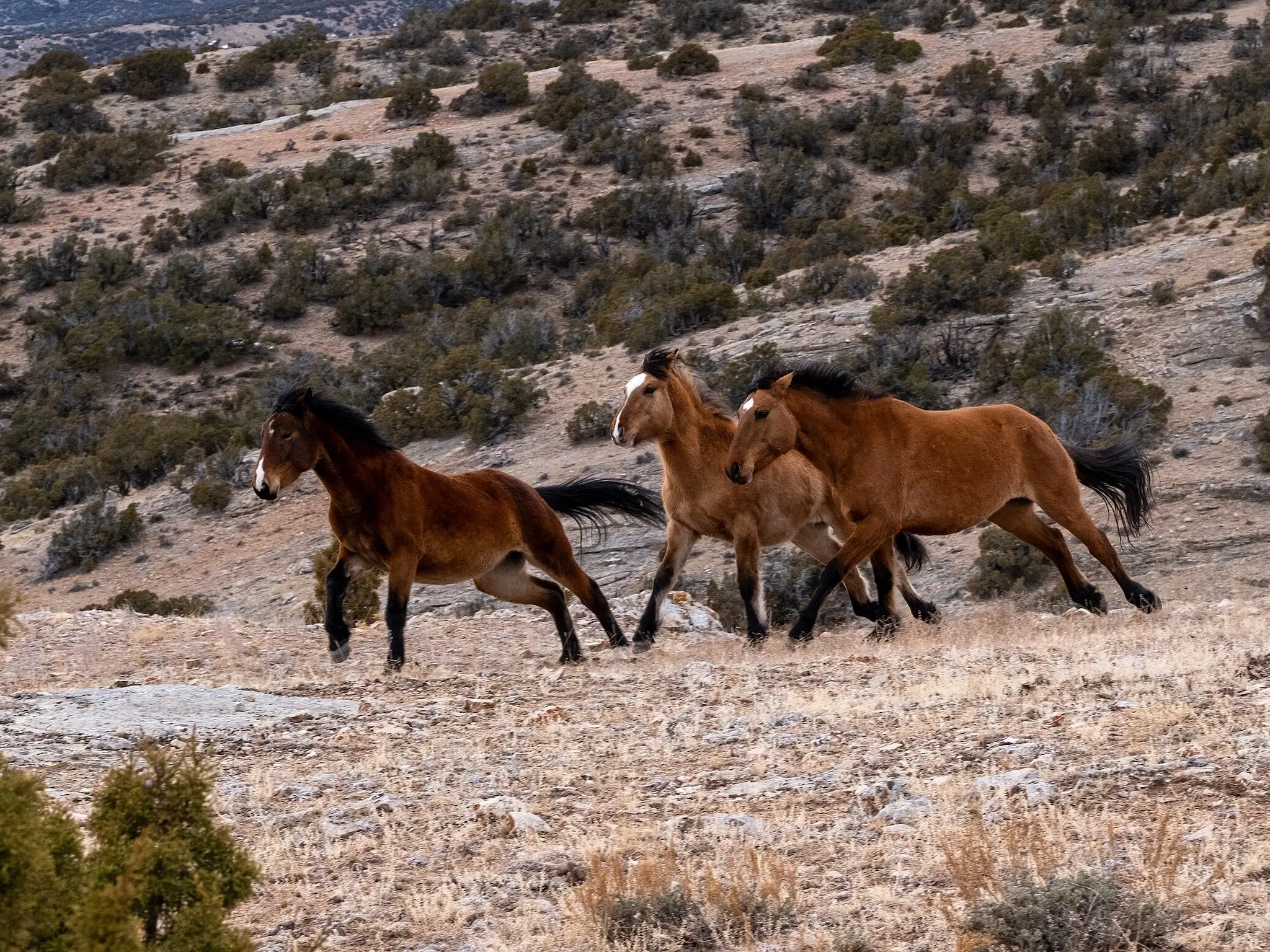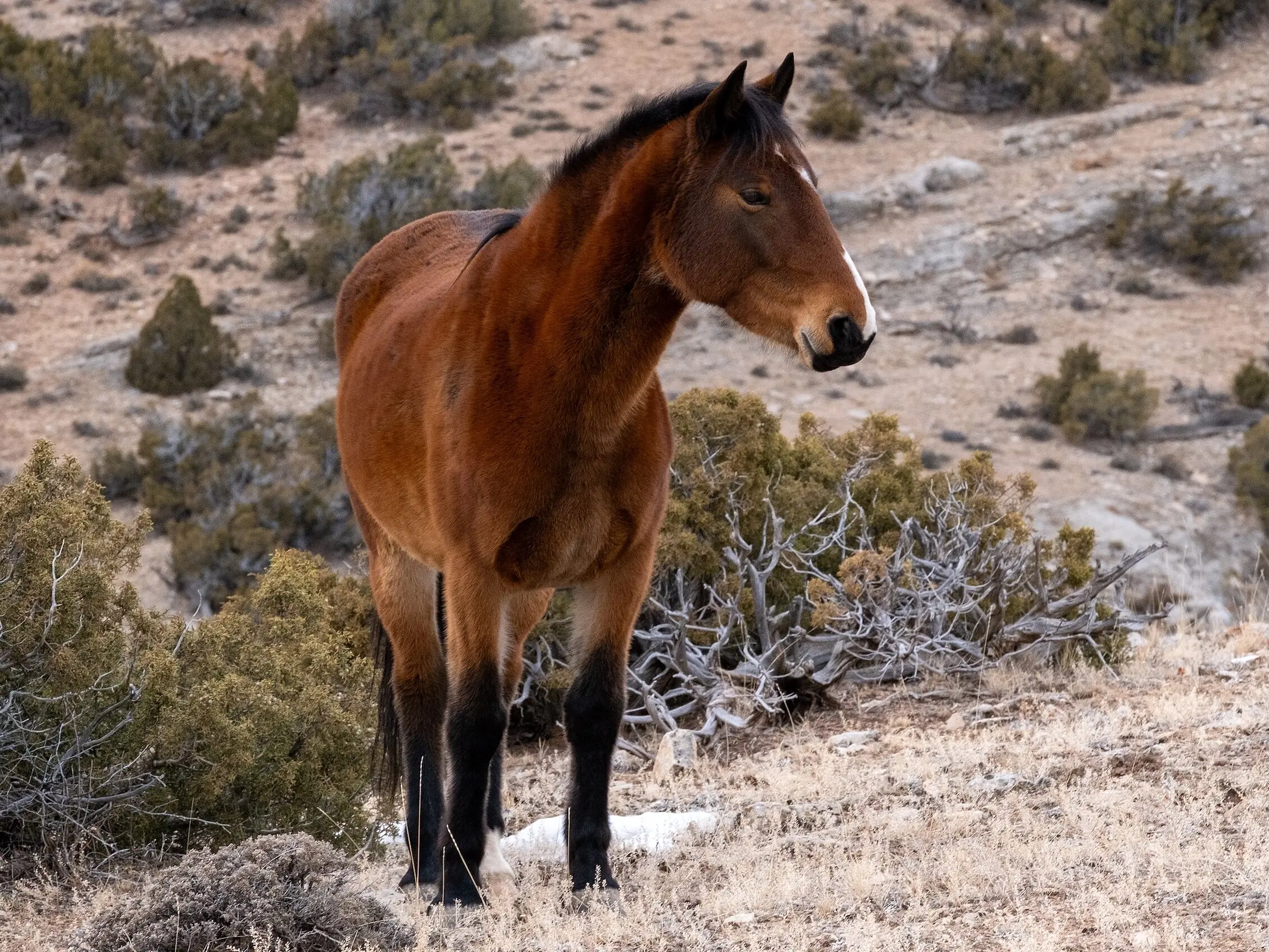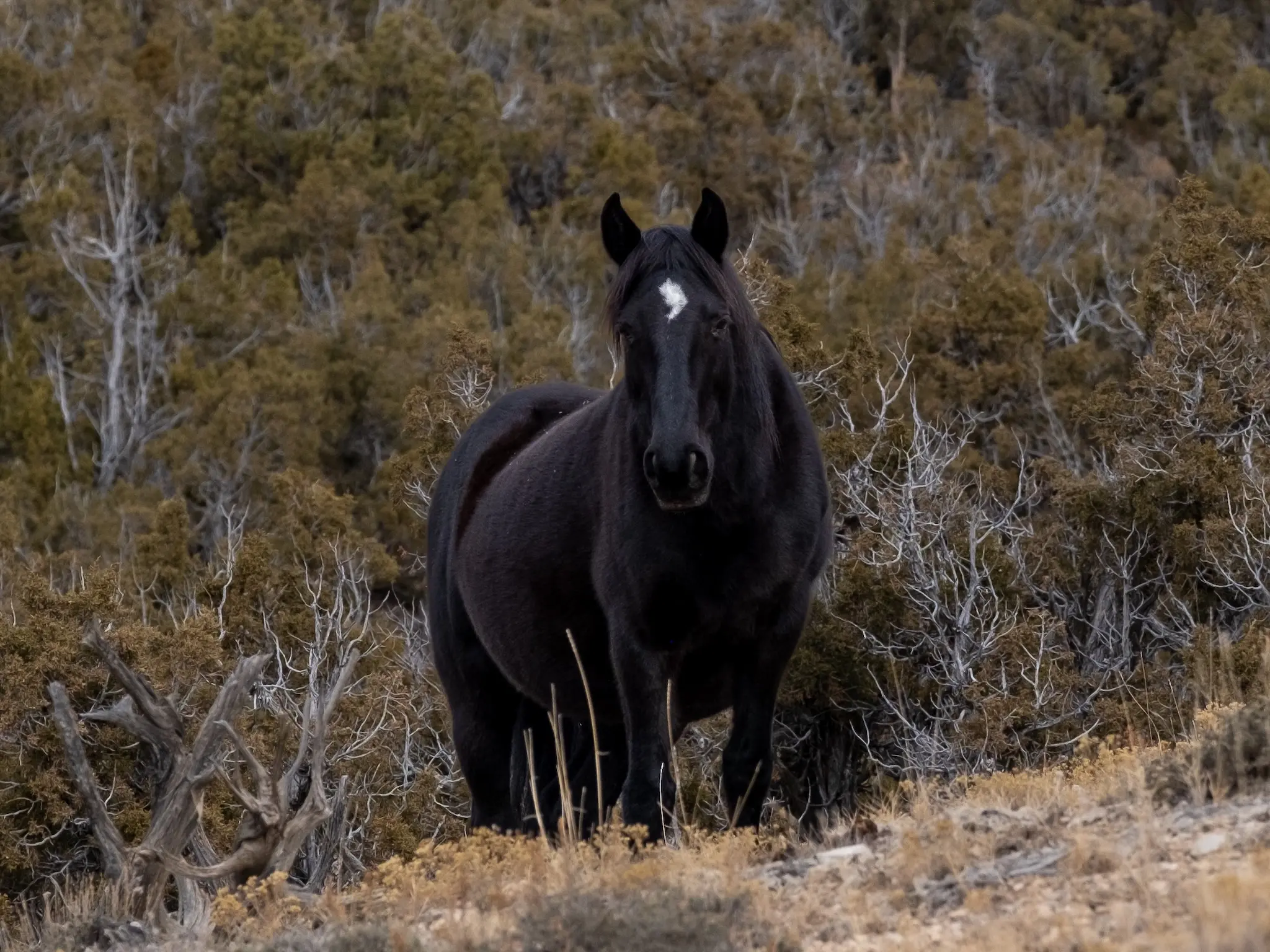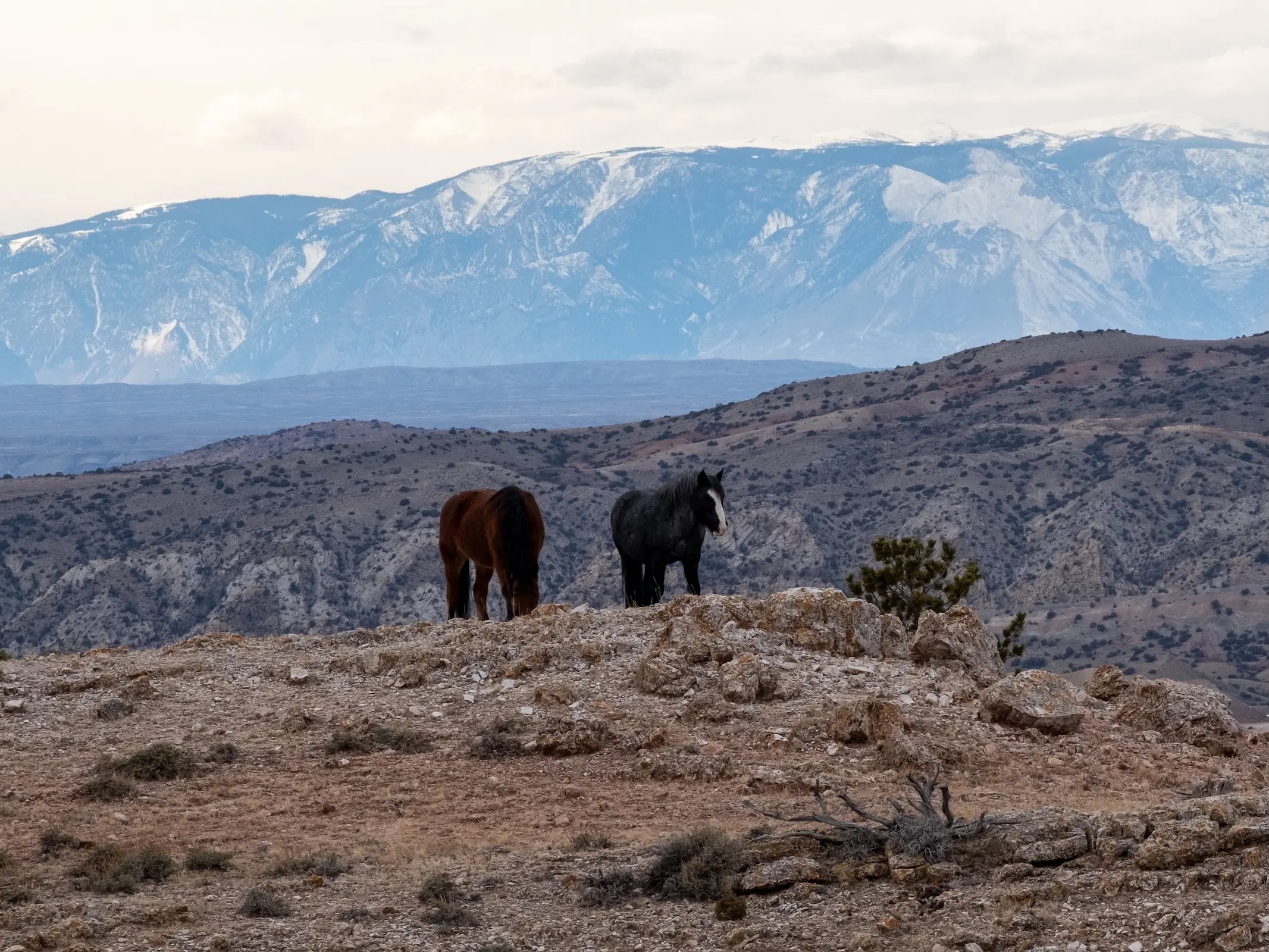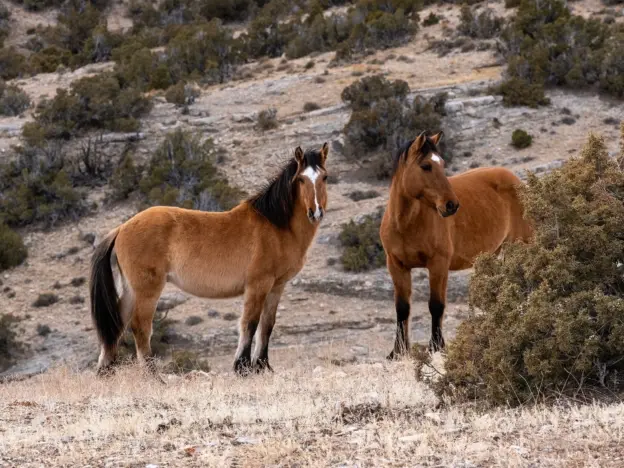Intro
There are many different strains of American Mustang, all of them originally imported Colonial Iberian types. The Pryor Mountain herd is notable for being particularly pure genetically.
Origins
Descendants of animals brought by Spanish explorers during the 16th century, horses are thought to have been found in the Pryor range since the 17th century. By the late 19th century their numbers were thriving, the hardy Iberian animals adapting well to local terrain. As settlers began to arrive, domestic horses made their way into the herds.
Early in the 20th century the Taylor Grazing Act of 1934 gave ranchers permission to graze their herds on federal lands. By 1946 the BLM was established to manage the land, but not yet to protect the herds. Feral horses in many places are considered pests to ranchers and farmers, competing with livestock for resources. Unbranded animals were often rounded up and sold or domesticated.
Establishing Laws
Luckily this led to the Wild Horse Annie Act of 1959, providing the wild horses some protection from harassment. Over the second half of the 20th century there were several attempts by the BLM to remove horses from the Pryor range, each time the locals rose up in their defense and challenged the BLM’s actions.
Their tenacity paid off and the Wild and Free-Roaming Horses and Burros Act of 1971 made it a crime for anyone to harass or kill feral horses or burros on federal land. They were to be managed by departments of the Interior and Agriculture and land was set aside for them.
Unique Genetics
Feral animals found in the Pryor Mountain area is a uniquely pure strain of Colonial Spanish horses imported to the Americas. Their herd is limited to 120 members, considered to be optimal number to prevent inbreeding. Animals that are captured are adopted and known for their hardy nature.
Features
Average height 13-15 hands
Some possess an ambling gait
Mane and tail are long and thick
Physique
Head has a convex or straight profile and a broad forehead
Eyes are wide set
Ears are curved
Nostrils are small
Neck is medium
Shoulder is sloping
Withers are prominent
Chest is narrow
Tail is low set
Hooves are large and hard
Traditional Colors
Generally bay, brown, chestnut, black, dun, roan and sometimes buckskin or pinto
Temperament
Intelligent and loyal
Spirited and lively
Use
When domesticated they are highly versatile and can be used for a variety of equestrian activities.
Helpful Links
Pryor Mountain Wild Mustang Center
BLM Pryor Mountain Range
More Images
